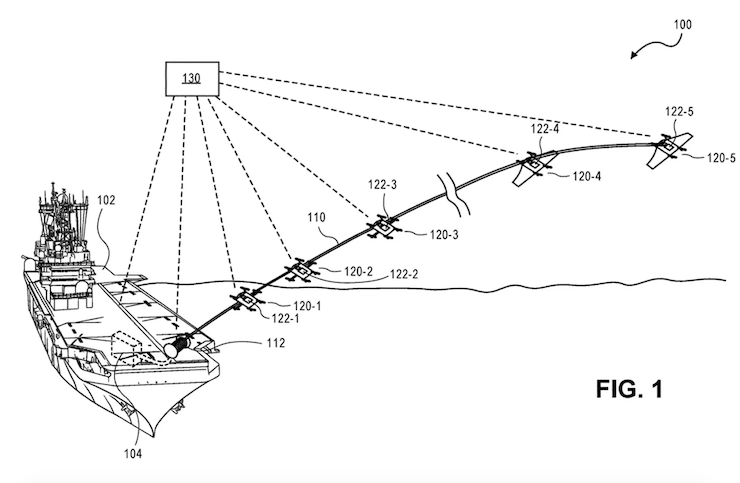Amazon Patents a System that Uses a Whip System to Launch Drones and Other Craft Into Orbit

Amazon has become well known for several things. It is one of the largest retail outlets world wide. It has made it’s founder, Jeff Bezos the richest man in the world. It has become a place to find everyday to obscure items, great books and music, and entertaining shows and movies. What many people don’t realize is that Amazon has also become leaders in inventive technology, coming up with some crazy ideas to patent. For example, Amazon has a patent for both an underground and underwater warehouse distribution center. They have a patent for a watch to monitor employees and augmented reality glasses that could also be used to monitor employees. Recently, a lot of the patents they create center around drones.
For years Amazon has been promising the public that they would be able to receive their orders via a drone delivery system. Some small areas are testing out prototype systems, but for the most part logistical restrictions have hindered a true nation wide drone delivery system, Amazon’s ultimate goal. That hasn’t stopped Amazon from rolling out a slew of drone related patents. Some of these patents have made quite a bit of stir. There is a patent for a giant airborne fulfillment center that would deploy packages to waiting customers below by drone. There are the lamppost docking stations for drones to recharge, deliver packages, or pick packages. Or a silo sized drone fulfillment/charging hive. Earlier this month, Amazon released that they were granted yet another patent on a concept they began working on in 2017.
This newest patent is called an Energy-Efficient Launch System for Aerial Vehicles. It was written by Amazon Air VP Gur Kimchi and senior Amazon inventor Louis LeRoi LeGrand III, and describes a whip like system to launch drones into the sky. The patent’s abstract states, “An energy-efficient launch system that utilizes the principles of whip dynamics to launch payloads at high speeds is described. The launch system may include a marine vehicle having an onboard power source. A tapered, superconducting cable may be retractably connected to the marine vehicle via a winch and electrically connected to the power source. One or more aerial vehicles may be coupled to and receive power via the cable. To launch a payload at the end of the cable, the marine vehicle, winch, and/or aerial vehicles may be operated in coordination to create, propagate, and accelerate a whip waveform along the cable toward the payload.”
What this means is that a large ship at sea, possibly a cargo cruiser, would be the launch site. A long cable with drones attached along it would be released over the water. The cable would be powered by a source from the ship that would also power the drones placed in precise intervals along the cable. At the very end of the powered cable would be the payload. The payload could be a satellite, a small manned aerial vehicle, or a larger drone. The small drones along the cable would be flown up and down turning the cable, that could be anywhere from 10-500 miles long, into a giant whip. Once the whip has built up enough force the payload at the end needs to be released at the precise moment to give it a large enough trajectory to launch into low Earth orbit.
Though this may seem like an overly elaborate plan to launch an object into low orbit, it has a logical reasoning behind it. As Kimchi and LeGrand explained, “Existing methods of launching aerial vehicles generally rely on energy-inefficient processes. For example, in order to launch a payload at high speed, conventional processes utilize fuel, e.g., rocket fuel, to launch aerial vehicles. In addition, the fuel must be carried by the aerial vehicle that is being launched, thereby increasing the weight of the aerial vehicle and requiring correspondingly more energy to complete such a launch.” This mega whip launcher provides a means of launching an aerial vehicle at a high speed, into a high altitude, with little energy. “Accordingly,” the pair goes on to state, “it may be desirous to launch aerial vehicles and/or their payloads at high speed using energy-efficient, controlled and repeatable processes.”
This doesn’t mean we should expect to see this patent be made into a working model anytime soon. Like many of the patents written by researchers at Amazon, this is just an idea. “Patents take multiple years to receive and do not necessarily reflect our current product roadmap,” related an Amazon representative. “Like many companies, we file a number of forward-looking patent applications that explore the full possibilities of new technology.” With the ever increasing speed of technological advancements, especially those centered around drones, having a patent like this filed is a way of protecting an intellectual concept should the need or desire for development arise.
|